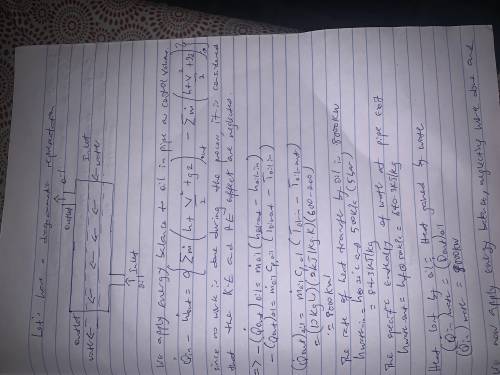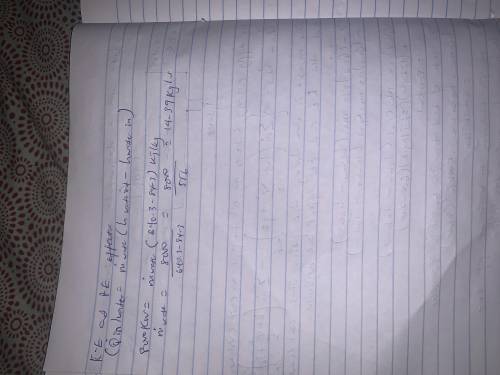
Engineering, 22.04.2020 04:51 dreamer197
Oil enters a counterflow heat exchanger at 600 K with a mass flow rate of 10 kg/s and exits at 200 K. A separate stream of liquid water enters at 20°C, 5 bar. Each stream experiences no significant change in pressure. Stray heat transfer with the surroundings of the heat exchanger and kinetic and potential energy effects can be ignored. The specific heat of the oil is constant, c = 2 kJ/kg · K. If the designer wants to ensure no water vapor is present in the exiting water stream, what is the minimum mass flow rate for the water, in kg/s?

Answers: 1
Another question on Engineering

Engineering, 04.07.2019 18:10
Water in a partially filled large tank is to be supplied to the roof top, which is 8 m above the water level in the tank, through a 2.2-cm-internal-diameter pipe by maintaining a constant air pressure of 300 kpa (gage) in the tank. if the head loss in the piping is 2 m of water, determine the discharge rate of the supply of water to the roof top in liters per second.
Answers: 3

Engineering, 04.07.2019 18:10
You are making beer. the first step is filling the glass carboy with the liquid wort. the internal diameter of the carboy is 15 in., and you wish to fill it up to a depth of 2 ft. if your wort is drawn from the kettle using a siphon process that flows at 3 gpm, how long will it take to fill?
Answers: 1

Engineering, 04.07.2019 18:10
Awall of 0.5m thickness is to be constructed from a material which has average thermal conductivity of 1.4 w/mk. the wall is to be insulated with a material having an average thermal conductivity of 0.35 w/mk so that heat loss per square meter shall not exceed 1450 w. assume inner wall surface temperature of 1200°c and outer surface temperature of the insulation to be 15°c. calculate the thickness of insulation required.
Answers: 3

Engineering, 04.07.2019 18:20
An engine runs on the ideal diesel cycle. the cycle has a compression ratio of 20 and a cutoff ratio of 2. the highest temperature in the cycle is 1200 k. if the heat into the system is 300 kj/kg of working fluid and using variable specific heats determine the work produced per mass of working fluid
Answers: 3
You know the right answer?
Oil enters a counterflow heat exchanger at 600 K with a mass flow rate of 10 kg/s and exits at 200 K...
Questions


Social Studies, 28.07.2019 00:20






Advanced Placement (AP), 28.07.2019 00:20



Chemistry, 28.07.2019 00:20

Chemistry, 28.07.2019 00:20


Chemistry, 28.07.2019 00:20


Social Studies, 28.07.2019 00:20


Social Studies, 28.07.2019 00:20

Social Studies, 28.07.2019 00:20





